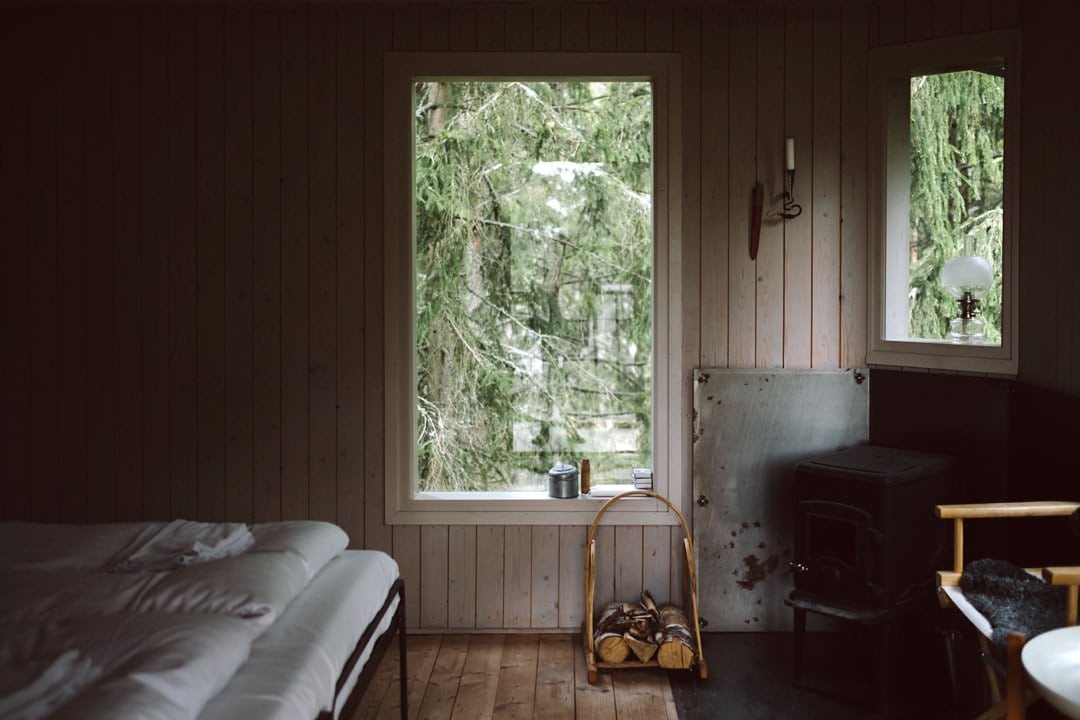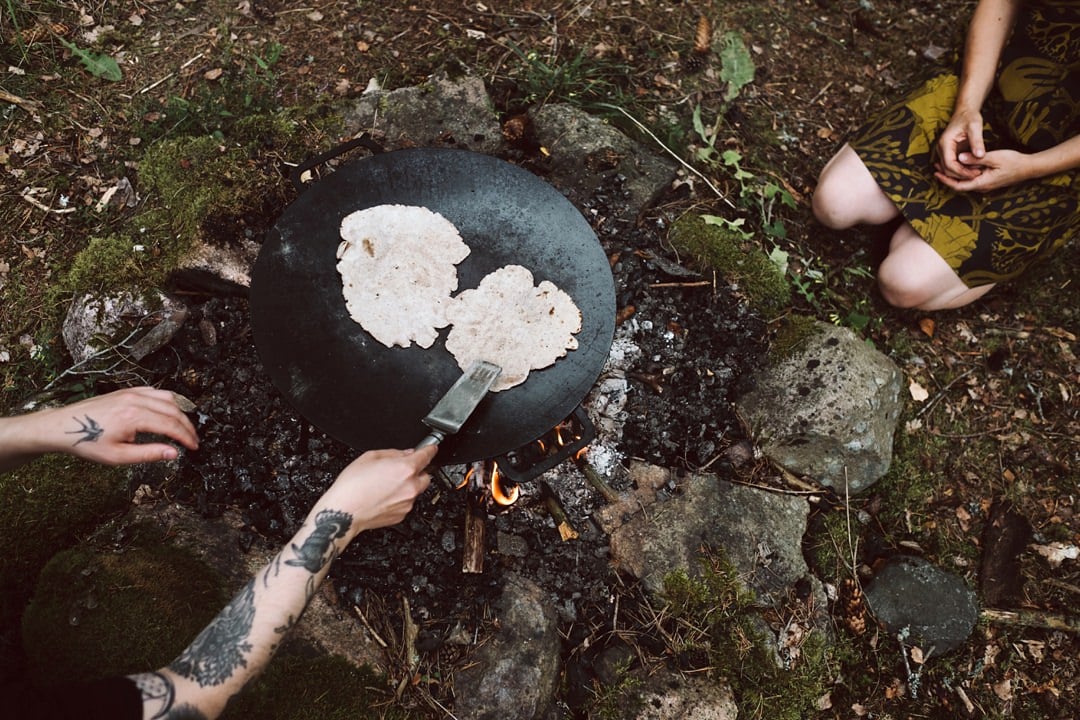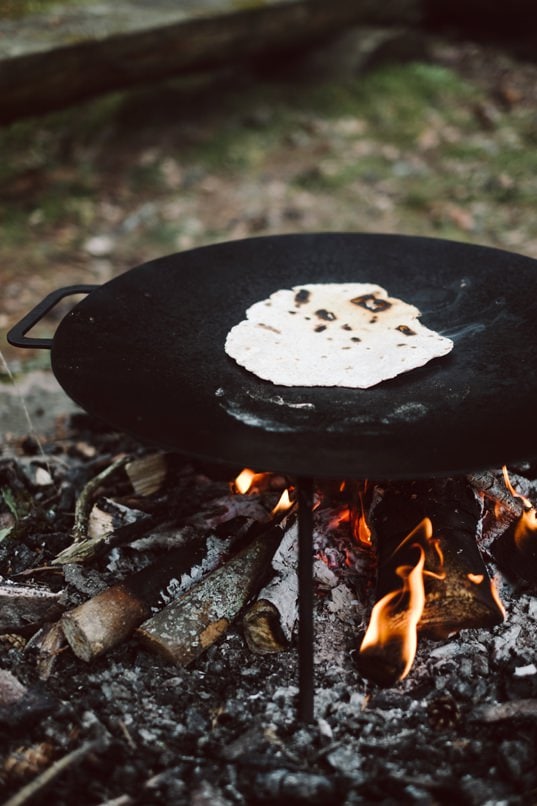
Sponsored Post
They are all introduced by detailed texts and pictures which give instantly itchy feet. At our first visit on the homepage we found a dozen places we would pack our bags for. Be it the Re:hof Rutenberg near Berlin, the Arche Hof in Bavaria, the outstanding Terragora Lodges in France, the Eremito Hotelito del Alma in Umbria, the Tainaron Blue Retreat in Greece, or the ION Iceland Adventure Hotel in Iceland. As huge fans of Scandinavia, we were pulled to Sweden. We stumbled across the amazing Treehotel before. But when we saw Urnatur we were sure to have found our dream location.
Ulrika and Håkan are the perfect example that for Good Travel not only classy and sustainable accommodations are important, but that the people behind are crucial as well. You have to experience for yourself what they have created with Urnatur. Suck in all the inspiration provided there. Feel the beauty of nature, the poetry of the woods.
Who follows our blog will soon notice our weakness for beautiful places where we can unwind and enjoy life. At least once a year we have to satisfy our wanderlust. Leave the stressful everyday life at home and soak up new energy and especially inspiration. That’s why we were incredibly happy to be invited by Franziska and Judith from Good Travel to visit one of their locations. On the first sustainable booking platform in Europe they gathered carefully chosen authentic and inspiring accommodations. On the Good Travel website you find unique hotels, BnBs and holiday lodges which were chosen according to 5 criteria of sustainability. For the founders, regional and seasonal organic cuisine is as crucial as a near-natural construction and a sensible use of resources. Also, the social cooperation is important. The accommodations have to fulfill at least one criterion to be listed. The selection ranges from old farms over designer hotels to Mediterranean mansions, tree houses and camping grounds.




































































However, these breads were also found in thousands of years old Eastern Gotland graves. Back then, the bread was baked with peas and spruce bark. It is not completely odd to use spruce bark. It is rich in iron, zinc, manganese, calcium as well as in vitamin C, B1 and B2, and also strengthens the immune system with bioflavonoid. The thin layer (bass) beneath the upper bark is best collected at the beginning of June. Of course, you only take as much as it does not harm the tree and it can live on. Ulrika usually uses bark of trees which have to be felled, anyway. The bark is dried in the oven to be ground afterwards. The bark flour swells a lot and does not contain gluten, so the amount in the breads and other backed goods should not be too high. A quarter of the needed flour can be substituted easily. We thought the taste was special. You would think it is resinous, tart, maybe even bitter. However, the nutritional bark does not only carry vitamins, but also the trees sugar, which is why the flour has a lightly sweet, savory note. To bake the barkbröd in the middle of the woods was an extraordinary experience. Just sitting together around the fire, spreading some butter in the breads and enjoying the lights through the tree crowns was superb!
Did you know there is a word in Japanese for the light falling through the trees? Komorebi. We got to know this term from Gabriele Kubo, a florist living in Japan. With their project “Art in Nature”, Ulrika and Håkan give artists the opportunity to live in their woods and to create something which mirrors the philosophy and the feeling concerning Urnatur. Gabriele was chosen to be this year’s artist and she decided to create a place in the woods where you can meet, enjoy the surroundings and just be. Her object is a planted table in Japanese height, at which you can sit at eyelevel with the plants of the woods. She incorporated uncountable mosses and plants she found in the woods into the table. The inner of the table is made of earth so the plants can keep growing and the table will change over time. It shall become a living object. The artist chose a spot in the woods where in summer from 12:30 on, the table is engulfed in a light spectacle. Then, the sun breaks through the tree tops and dances on the mosses and ferns on the wood table. It is beautiful. The moss cushions are so comfortable you spend the whole day there and discover a thousand things. We are happy that we were at the initiation.
We could tell you so much more about out visit at Urnatur, we decided to split the article to report more from our adventured and experienced in Sweden a second post.
Ulrika is a biologist and designer, Håkan a forest manager. Their farm is surrounded by plenty of native cultivated land with free ranging animals, a lake, fields and a lot of wood. Together, they cultivate the land since over 20 years with traditional methods. In their wood, they built original cottages and tree houses with their very own hands. The cottages are not only made of purely natural materials, but were built mainly from trees which fell victim to two severe storms at the beginning of the millennium. Thus, only few healthy trees had to be felled. With a mobile sawmill the trees were prepared, the rest was a lot of handiwork. Everything has to fit accurately, has to be smoothed perfectly, sealed with moss. Some accommodations are built like the cottages of the Sami, the native people of Northern Sweden, and are an architectural highlight. Our cottage’s roof, for example, was impregnated with a special sort of tar. The shingles just got a new layer a few days ago. You could smell the wonderful, resinous scent from meters away. It gave us a warm and cozy feeling immediately. On other roofs we could marvel at what also grows on the floor. Between moss and fern we found delicious strawberries. Inside the cottage, everything was furnished very natural and modest. The rooms were painted in self-made natural colors, based on flaxseed oil, the furniture were partly designed by Swedish artists. What all houses have in common is the absent electricity. You heat with ovens and woods, illumination comes from candles or oil lamps, and you cook on open fire. Even if it is very cozy inside the cottages, we basically only snuggled up with a book inside in the evenings. There were just too many things to discover and we were way too curious. Thus, we tried to grill Ulrika and Håkan as often as we could about the plants in the garden and the woods, special preparation, personal stories. We just wanted to learn as much as we could from these inspirational people.
During our days at Urnatur we got to know a lot about the wood, and tried and tasted a lot. Apart from all the great things you get for breakfast, anyway, just as Ulrika’s self-baked sourdough bread or the Chaga Tea (a tea made of birch bolete), we were thrilled by the dandelion syrup, birch wine and the self-made wood liquor. When Ulrika told us about barkbröd, a flatbread made of birch bark, we were extra excited. We absolutely wanted to prepare those flatbreads with her and were super happy to see that she had some bark in her pantry. Today, it is uncommon to bake this bread since it is a reminder of bad times. In times of crisis and during the Second World War it was emergency ration. Bread was thinned with the bark flour because every food was rationed.
This post was written in cooperation with Good Travel. Even though we were paid for this article, we give our own opinion uninfluenced. We had full rein over text and content of this article.


